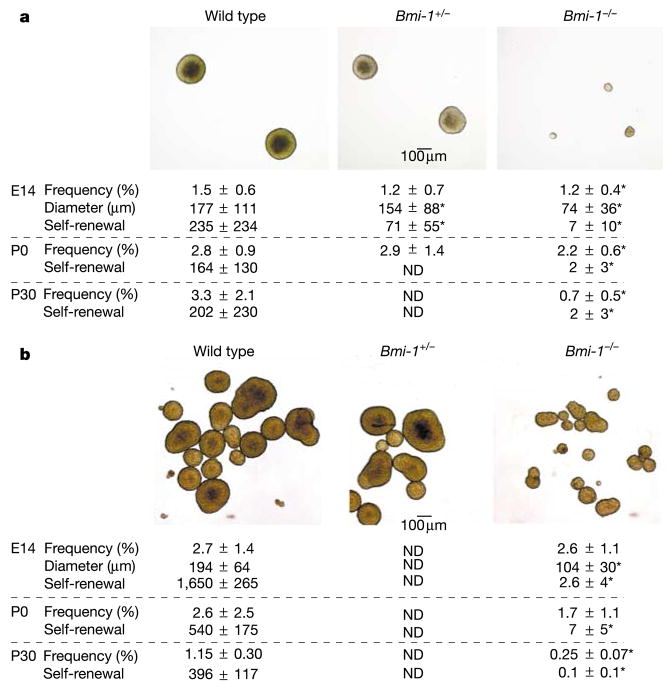Figure 1.
CNS stem cells and gut neural crest stem celcgls (NCSCs) require Bmi-1 to self-renew normally. Images show typical neurospheres that formed after 10 d in non-adherent cultures from E14.5 CNS neural stem cells (a) or PNS NCSCs (b). a, The frequency of Bmi-1 −/− E14 telencephalon cells, P0 SVZ cells or P30 SVZ cells that formed multipotent CNS neurospheres was significantly reduced relative to wild-type cells (*P < 0.05). The diameter and self-renewal of the Bmi-1 −/− neurospheres were also significantly reduced. Self-renewal capacity is expressed as the number of secondary neurospheres generated per primary neurosphere on subcloning. b, Similar results were obtained for multipotent PNS neurospheres generated by E14.5, P0 or P30 wild-type and Bmi-1 −/− gut cells, except that the frequency of neurosphere-forming cells was not significantly reduced until P30. Values are the mean ± s.d. for 3–6 independent experiments. Bmi-1 deficiency also consistently reduced self-renewal when the data were normalized to control for differences in the size of neurospheres: 3.5 ± 0.8% of dissociated wild-type P0 PNS neurosphere cells formed secondary neurospheres on subcloning, as compared with 0.3 ± 0.1% of Bmi-1 −/− cells (P < 0.001). ND, not determined.

